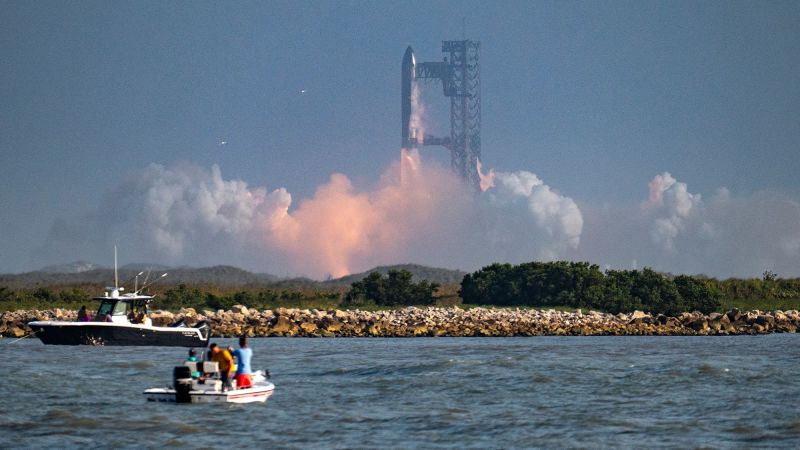The ambitious plans of SpaceX, particularly their quest to make human life multi-planetary, recently faced a significant setback when a Starship vehicle exploded during a ground test at the company’s Starbase facility in Texas. This explosion sent plumes of smoke and fire into the air, raising concerns about the design and engineering challenges that still persist in developing spacecraft that will ultimately transport humans to Mars. With every mishap, the viability of such monumental aspirations comes under scrutiny, as the technical hurdles become glaringly evident.
SpaceX, under the leadership of CEO Elon Musk, has ardently communicated its vision for establishing a self-sustaining human civilization on Mars. During a recent talk with the employees in South Texas, Musk identified the timeline toward this goal as the metric for measuring progress within the company. “Progress is measured by the timeline to establishing a self-sustaining civilization on Mars,” he remarked passionately, attempting to rally support among his workforce for the organization’s goals. He followed this up by outlining the time constraints imposed by the distance between Earth and Mars, which varies significantly based on their respective positions in their orbits around the sun. These orbital dynamics mean that optimal windows for Mars missions appear only once every 26 months, a narrow timeframe that significantly impacts the planning and execution of future missions.
The next such window is coming up in late 2026, during which SpaceX hopes to launch a fleet of uncrewed Starship vehicles to deliver supplies to Mars. However, this ambition is fraught with uncertainty, given that multiple significant technical issues must be resolved first. The incident on Wednesday was noted to be the fourth explosive setback for the Starship program within just one year, leading Musk himself to admit during his May remarks that he considered the likelihood of successfully sending a Starship to Mars in 2026 to only be a “50/50 chance.”
Before the opening of the 2026 Mars transfer window, new versions of the Starship spacecraft, integrated with an upgraded Super Heavy rocket booster, are slated for testing. This system is designed to be the most potent launch system ever built, capable of carrying an impressive 661,387 pounds (300 metric tons) of propellant. Such upgrades are crucial for enabling streamlined journeys to Mars, allowing travel time to be reduced from over a year to a mere six to nine months. However, SpaceX’s Version 2 has already faced its share of difficulties, including failed test flights that resulted in debris falling near populated areas in Florida.
The recent explosion only exacerbates concerns about the Starship program’s readiness for interplanetary missions. Preliminary reports suggest that the incident originated from a gas tank that exploded, having failed to withstand its designated pressure limits in testing. Musk indicated that the issue might present an unprecedented challenge that the company must tackle moving forward. He elucidated the crucial role of continuous upgrades to the design: “It takes three major iterations of any major new technology to have it really work well,” he said, emphasizing the iterative nature of technological progress.
Moreover, the extent of the complications does not stop at launching Starships. For instance, one of the core challenges is managing fuel during the long trip to Mars. SpaceX plans to employ a series of tanker ships to transfer fuel in Earth’s orbit to support the Starship’s extended journey. Yet, this presents its own unique hurdles, involving the intricate and untested process of transferring cryogenic fuels from one spacecraft to another in microgravity conditions.
As pivotal deadlines draw nearer, experts express a range of opinions regarding SpaceX’s objectives. Some, like MIT’s Olivier de Weck, acknowledge the commendable vision behind SpaceX’s aspirations, although they voice skepticism regarding the feasibility of establishing the necessary infrastructure on Mars in the coming years. In contrast, members of the scientific community like Phil Metzger underscore SpaceX’s track record for delivering results despite setbacks, suggesting that while imminent challenges are daunting, they remain hopeful.
Ultimately, SpaceX’s journey towards Martian colonization is still beset with considerable challenges, not the least of which includes ensuring the safety and well-being of future astronauts. Musk has emphasized that the physical and logistical aspects of interplanetary travel necessitate meticulous planning and flawless execution. From the energy-efficient design of the Starship to buffering against radiation exposure, every facet requires innovative solutions to keep human habitation possible on Mars. As the aspiration to send humans to Mars continues to unfold, the world will be watching closely how SpaceX navigates the uncharted waters of both engineering and existential challenges in their quest for knowledge beyond our planet.



